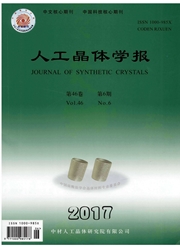

 中文摘要:
中文摘要:
提出超高频连续感应钎焊工艺方法,采用Ag—Cu-Ti合金钎焊金刚石磨粒与大尺寸钢基体。通过扫描电子显微镜(SEM)和X射线能谱仪(EDX)对钎焊后的试样界面微观结构以及金刚石磨粒表面生成物形貌特征进行观察和分析。结果表明,超高频连续感应钎焊实现了金刚石、钎料、基体三者之间的连接,钎焊后的钎料层组织晶粒细小,局部区域可见到枝晶状组织。金刚石与钎料层界面存在Ti元素与C元素的反应层,在金刚石磨粒表面生成点状TiC晶体,其直径均100nm以下,且在金刚石表面呈离散分布。与真空炉中钎焊工艺相比,该界面结构更有利于钎料层对金刚石磨粒的连接把持。
 英文摘要:
英文摘要:
Continuous induction brazing with ultra-high frequency is proposed to braze the diamond grits and large-size steel substrate with Ag-Cu-Ti filler alloy. The interracial microstructure of the brazed specimen and the resultant morphology on the diamond surface was investigated and analogized by scanning electron microscopy(SEM) and energy diffraction X-ray(EDX). The experimental results show that the bonding among diamond grits, filler alloy and steel substrate was achieved. Due to the short brazing time, the small grain and a little dendritic structure in the filler alloy was obtained. A reaction layer between Ti and C is observed at the interface between diamond grits and filler alloy. The grainy TiC, with the size less than 100 nm, was formed and discretely distributed on the surface of diamond grits. Compared to furnace brazing in vacuum, the interfacial structure of diamond brazed by ultra-high frequency induction is benefit for joining diamond to bonding matrix.
 同期刊论文项目
同期刊论文项目
 同项目期刊论文
同项目期刊论文
 期刊信息
期刊信息
